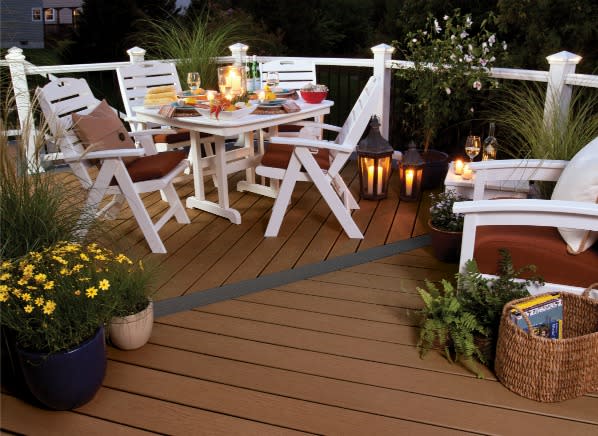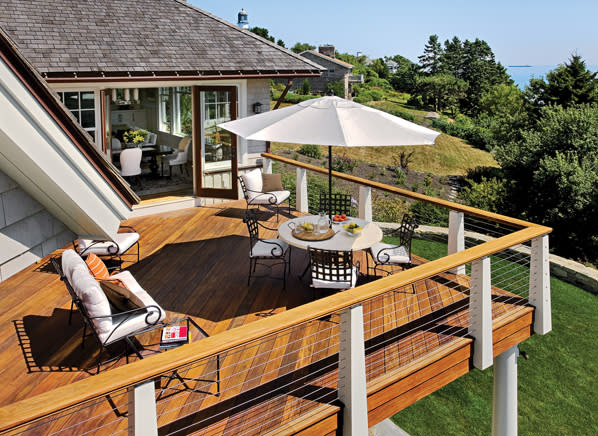5 steps to a safer deck
The collapse this past weekend of an oceanfront home’s deck—which injured 24 people, five seriously, after they gathered for a photo—is yet another reminder of the importance of inspecting your deck at least once a year This particular case is all the more tragic because the home was a rental. An estimated 40 million residential decks in the United States are more than 20-30 years old. Whatever the deck’s age, and whether it’s at your home or one you rent, the following pointers from the North American Deck and Railing Association and Consumer Reports' experts can help keep it safe:
Split or rotting wood
The deck that collapsed over the weekend was at least 10 feet off the ground. The top and the supports of such structures need a good look. The ledger board, the deck’s connection to the house, is a common point of failure. Walk the deck to check for soft spots, particularly in areas that tend to stay damp. One way to check the floorboards: Try to penetrate the wood with an ice pick or screwdriver; if it goes in ¼ inch or more, you might have a decay problem. And check all joists (to which the deck boards are attached), support posts, railings, and stairs for weakness.
Loose flashing
Metal or plastic, flashing is often installed where the deck and house meet. Be sure that it’s intact and consider adding or replacing it if you notice areas that let water pool.

Loose or corroded fasteners
Rusted fasteners are a common problem around salt air. But any nails, screws, and anchors used in the installation will eventually corrode. Screw in any loose fasteners, and pound back in any nails. (If a nail goes in too easily, you could have a decay problem.) If a fastener seems rusted or otherwise corroded, replace it; a bad fastener could contribute to wood deterioration.
General cleanup
Mildew is the enemy and can quicken the process of loosening fasteners and overall wood deterioration. Clear away leaves and other debris. If mildew is present, you’ll need to clean it off and refinish. Before staining, pressure-wash or brush the old surface with a cleaning solution. If there is any remaining mold and mildew, remove it using a solution of 1 part bleach and 3 parts water. When staining, use as many coats as the manufacturer recommends.
Special circumstances
Other checks you’ll need to do involve everything above and on the deck. Overhanging tree branches can pose a problem if they’re weak. Grills and other heat sources should be placed away from flammable surfaces, with a non-flammable pad beneath. Make sure lighting is up to code and working properly. Outdoor furniture should be sturdy and away from the edge of the deck, and any storage boxes—such as for lighter fluid, cleaners and other hazardous materials—should have childproof latches.
Note that town or other municipal codes might be more stringent—or even more lax—than the above recommendations. NADRA recommends an annual inspection by a deck builder or home inspector. And if you’re in the market for a new deck, see our buying guide.
—Ed Perratore (@EdPerratore on Twitter)

More from Consumer Reports:
The best energy efficient air conditioners
5 terrific side by side refrigerators
Best places to buy large and small appliances
Consumer Reports has no relationship with any advertisers on this website. Copyright © 2006-2015 Consumers Union of U.S.


